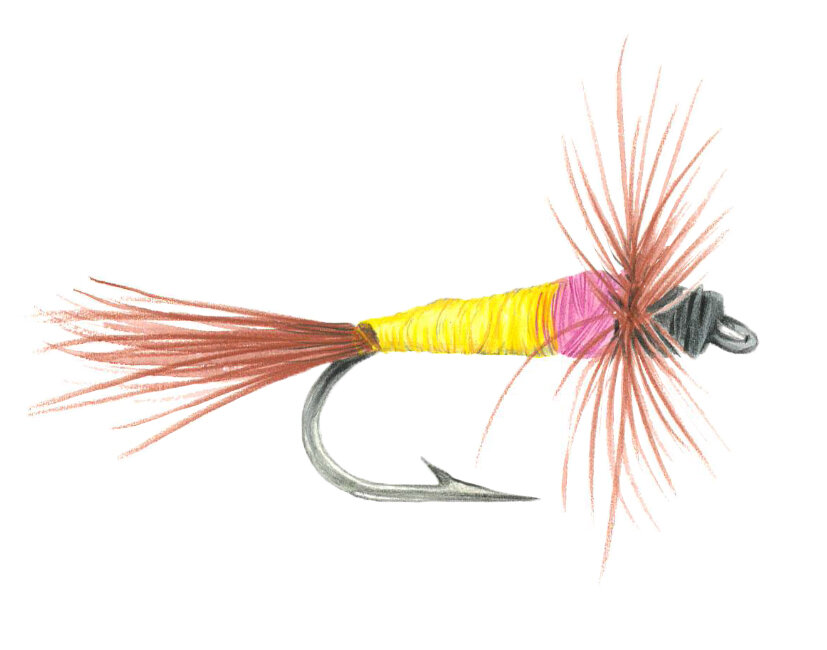Fly fishermen try to fool fish into thinking that tiny bits of hair, fur, feather and thread tied to a hook are in fact tasty insects. Broadly, there are two types of fishing fly: imitators, which are designed to look like real insects; and attractors, which often look like nothing on God’s green earth, but fish seem to like them anyway. Here are three outlandish patterns that caught (ahem) our eye
Woolly Bugger
Still one of the top patterns around, the Woolly Bugger is a popular and widely used fly for catching all sorts of fish. It has proven its effectiveness over many decades, which is perhaps largely down to its versatility – it looks like a lot of things that fish love to eat, from a drowning fly to a large nymph, or even a small baitfish.
Booby Nymph
This design, which is often irresistible to trout, came about following a cunning observation: that many emerging insects use a bubble of air to move from the lake bed to the surface, which then holds them in place while they transform into a flying insect. The basic booby is simple in design – a pair of foam boobies at the head, a short body and a fluffy tail of marabou feathers (to simulate the waving legs and wings as the nymph emerges). In still waters it can be ruthlessly effective. However, fly fishing purists consider the use of boobies to be as crude as the name, and akin to cheating. The issue is contentious enough that some lake owners ban boobies from their waters.
Tups Indispensable
Made for catching brown trout in the chalk streams of south west England, this fly was the brainchild of Devon tobacconist RS Austin in 1890. Its peculiar name stems from the fact that it utilised an unusual material in its manufacture; namely, wool taken from the testicles of a ram or ‘tup’. This fine substance was long noted by anglers for its “beautiful dusty yellow” colouring, as first recorded in Alexander Mackintosh’s 1806 book The Driffield Angler.
Words: Matt Jones, Illustrations: Louise Logsdon



